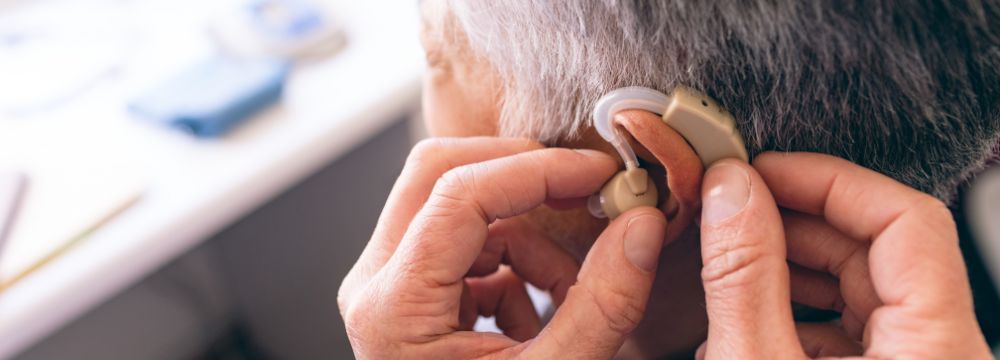Single Sided Deafness
Single-sided deafness (SSD) occurs when an individual has complete hearing loss in one ear while the other ear may have normal hearing or profound hearing loss. It is characterized by a profound hearing loss of more than 91dB in one ear. The hearing loss renders the ear incapable of benefiting from traditional amplification devices due to severely impaired hearing or speech comprehension.
Typically, the brain uses the slight differences in the time it takes for sound to reach each ear to locate its source. This ability makes it easier and disorienting to pinpoint where sounds are coming from.
SSD makes it challenging to determine the direction of sounds and fully comprehend speech, especially in noisy settings. The listener feels bombarded with a lack of sense of direction, leading to confusion and disorientation. In noisy settings, the brain struggles to isolate individual voices and sounds, taking longer to process and often resulting in a lower perceived volume than two functioning ears.
Causes of Single-Sided Deafness
Single-sided deafness (SSD) can be triggered by various factors, including:
- Acoustic Neuroma: A benign nerve tumor connecting the ear to the brain.
- Bacterial Infections: The infections can impact the ear and lead to hearing loss.
- Circulatory Disorders: Problems with blood circulation may impair ear function.
- Ear Damage: Injury or deterioration of the ear structures.
- Head Trauma: Blunt force trauma to the head.
- Meniere’s Disease is a disorder of the inner ear that can cause vertigo, tinnitus, and hearing loss.
- Viral Infections: Viruses cause inflammation and damage to the auditory system.
Can SSD Be Cured?
Although SSD has no cure, both non-surgical and surgical treatment options are available.
Non-Surgical Treatments for Single-Sided Deafness
The primary non-surgical treatment options for single-sided deafness (SSD) include CROS (Contralateral Routing of Signal) and BiCROS (Bilateral Contralateral Routing of Signal) hearing aids. The devices are designed to be worn in both ears. They feature a microphone on the weaker side. The unique setup allows sounds to be wirelessly transmitted to a receiver in the ear with more substantial hearing.
CROS and BiCROS hearing aids enhance sound awareness and speech comprehension while restoring the ability to perceive sounds from both sides. The technology channels sound from the impaired to the functioning ear, improving sound localization and overall volume perception. The devices are also adjustable, allowing for reprogramming to accommodate changes in hearing levels.
A significant advantage of these systems is their capability for wireless ear-to-ear streaming. The listener can more easily experience phone calls, music, and other media, making them highly effective for individuals suffering from SSD.
Surgical Treatment Options
In some situations, single-sided deafness can also be addressed with surgical options, such as a bone-anchored auditory implant. This surgery uses bone conduction to transmit sound to the functioning ear.
Installing a bone-anchored hearing device is a safe, clear-cut procedure typically performed outpatient.
During the surgery, a small titanium implant, usually 3-4 mm in size, is embedded into the mastoid bone located behind the ear that is not functioning. This implant may feature an external abutment to which a detachable microphone and sound processor can be attached by clipping onto the support or using a built-in magnet.
Over time, the titanium implant will fuse with the bone, securely anchoring itself. This integration allows the device to conduct sound vibrations directly through the bone, resulting in greater hearing success.
